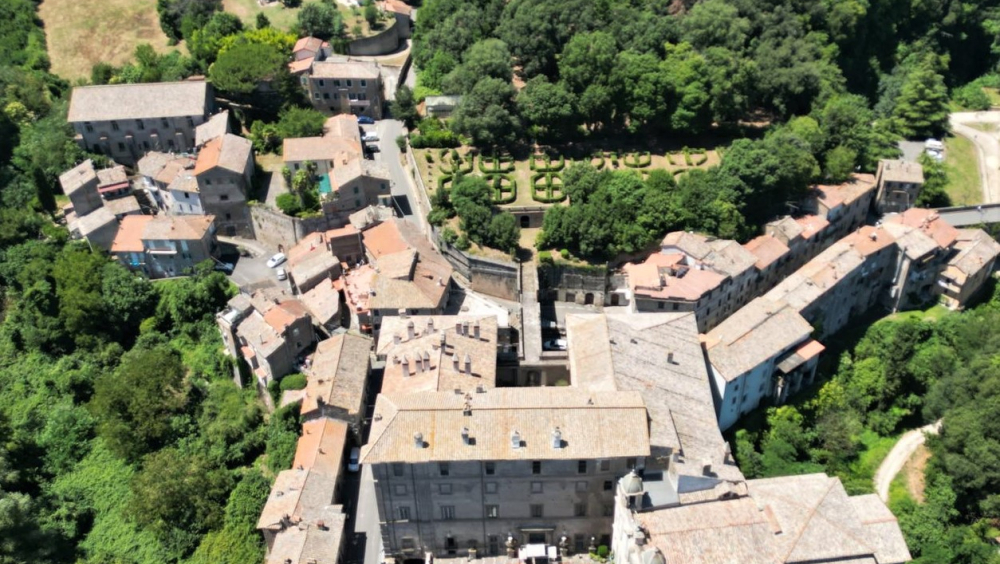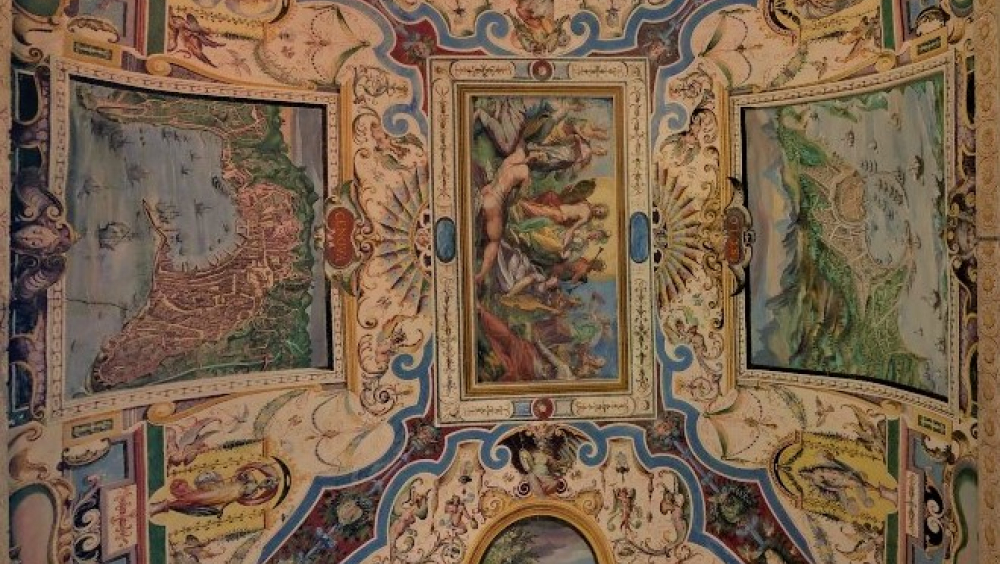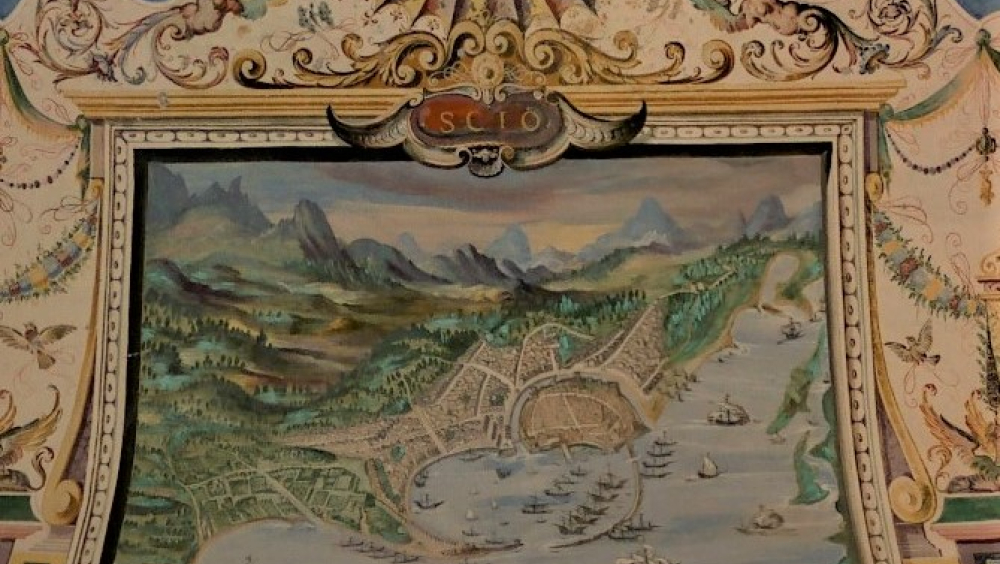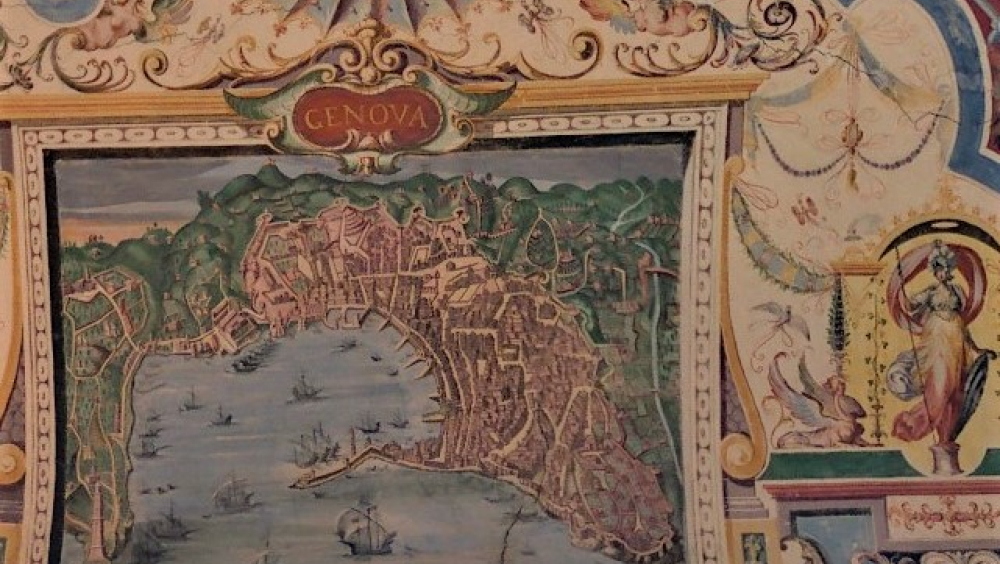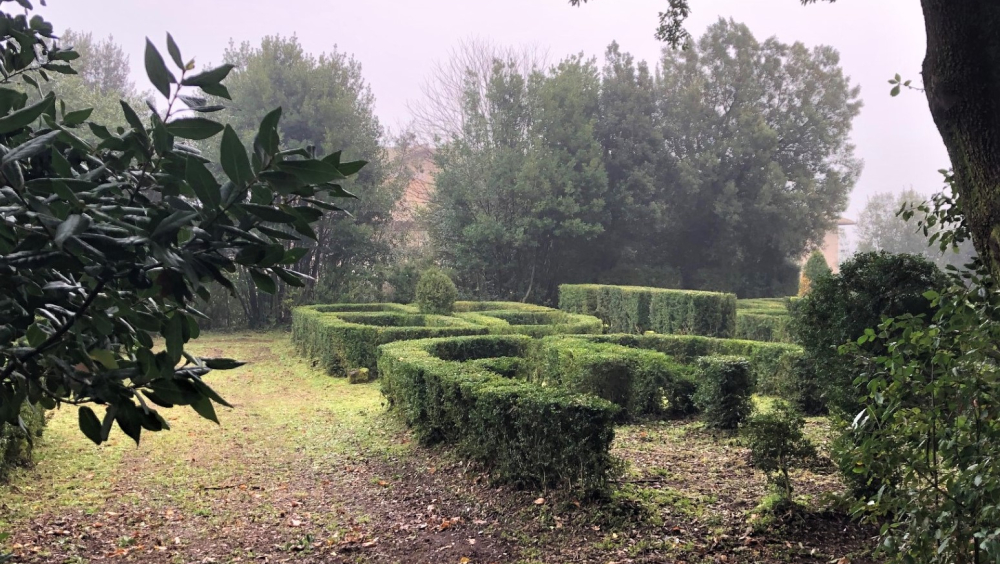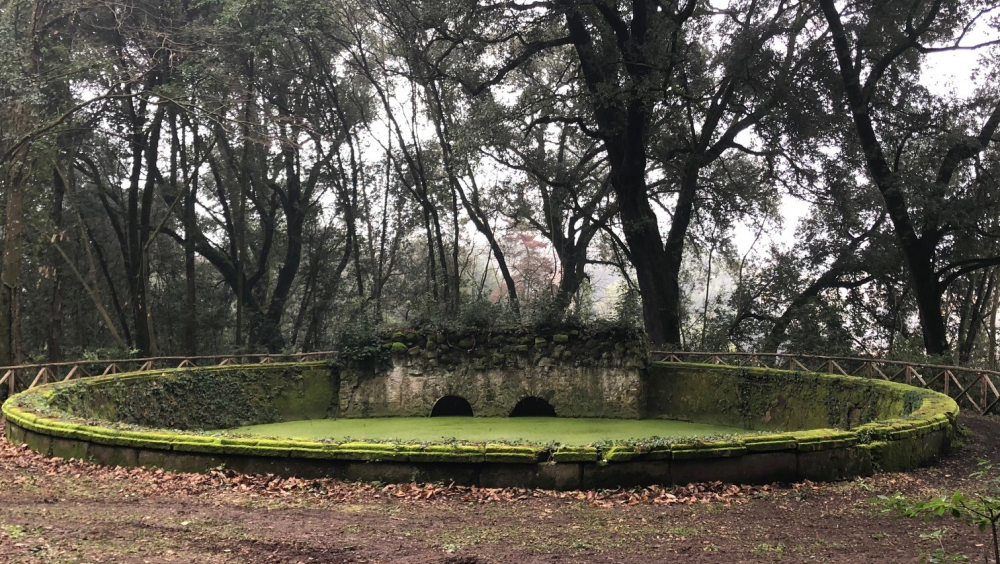Villa Giustiniani: the Roots of the Mediterranean
The Villa Giustiniani in Bassano Romano is a significant example of seventeenth-century Italian art: among its frescoes, however, there is a trace of a more complex history involving other Italian regions and other European nations.
The project ‘Villa Giustiniani. The Roots of the Mediterranean' aims to involve high school students in the rediscovery of these historical relations, which link the villa to places such as the city of Genoa - from which the Giustiniani family came - and the Greek island of Chios, which they controlled until the Ottoman conquest in 1566, developing a flourishing Mediterranean trade, centred in particular on the production of natural mastic. After moving to Italy, the Giustiniani family purchased the villa in Bssano romano in 1595, transforming it into a place of leisure thanks to important artists of the time.
The project intends to restore centrality to this history, promoting the collaboration between students from Bassano, Genoa and Aghios Minas (Chios).
The students will collaborate with each other in the design and realisation of a work of ‘environmental art’ that will enrich the park of the villa and a significant place in their city, documenting their work through digital contents, and also creating a video-story, the ‘Diary of Roots’, which will collect their experiences.
Students’ work will be based on research, stimulated by interactive workshops and guided visits by specialists. Contacts between the different schools will take place both in person and online. The environmental art installations, made with natural products and the typical mastic of Chios, will reflect the theme of exchanges, trade routes and shared memory among Mediterranean peoples, promoting dialogue between communities and strengthening cultural ties between Italy and Greece. The initiative is fully in line with the European Heritage Days, to which Villa Giustiniani is a regular contributor.
The Villa Giustiniani in Bassano Romano, in the province of Viterbo and not far from Rome, with its frescoed rooms and a large park is a magnificent testimony of 17th-century Italian art.
But why do we also find a map of the island of Chios among the frescoes with mythological and allegorical stories? And why is it depicted together with the map of Genoa? What links an ancient villa in a quiet village with a Greek island and one of Italy's most important port cities? What network of relationships and memory links places so different and distant? The project “Villa Giustiniani. The Roots of the Mediterranean” was conceived with the aim of involving high school students in the rediscovery and enhancement of the heritage of relations that lies at the origin of the building and its pictorial decoration, recovering the memory of a past that unites different Italian and European localities, a shared past made up of maritime routes and trade, which can be reactivated now through cultural exchanges and creative activities.
Originally from Genoa, the Giustiniani family exerted considerable political and economic influence in the Mediterranean, controlling the island of Chios and the nearby coast of “Asia Minor” from the 14th to the 16th century. Thanks to a vast network of maritime traffic, the Giustiniani developed a flourishing trade, particularly in mastic, a typical product of Chios, accumulating enormous wealth and consolidating their prestige until the Ottoman conquest in 1566. This forced them to move to Italy, where they continued to play a leading role in the economic and cultural history. In 1595, the Giustiniani, after settling in Rome, bought the fiefdom of Bassano Romano as a place of leisure and rest. Marquis Vincenzo Giustiniani initiated the extension and renovation of the ancient noble palace, transforming it into the present villa thanks to some of the most important artists of the time: Bernardo Castello, from Genoa, Antonio Tempesta, from Florence, Francesco Albani and Domenichino, from Bologna.
Our project intends to restore centrality to these historical events, interweaving research, narrative and creativity to offer an in-depth reading of the connections between peoples, markets, cultures and landscapes, following in the footsteps of the patron Vincenzo Giustiniani, who formed his personal taste on an international experience between Greece, Italy, France and England.
At the same time, the project's educational approach aims to actively involve the local community. Starting from an already existing twinning relationship between the respective communities, a central element will be the collaboration between high school students from Bassano, students from Genoa, and students from Aghios Minas (island of Chios), who, through participatory work, will transform the Villa Giustiniani into a place of connection between nature, history and memory.
Guided by the curators of the Villa and their teachers, the students from the three schools will collaborate with each other, in presence or digitally, to develop the project of a work of ‘environmental art’ to be placed in the park of the villa and in significant places in Aghios Minas and Genoa: a work inspired by the historical memory of the Giustiniani family and at the same time destined to enrich the heritage of the sites. At the same time, the students will document their research, meetings, and work through photos, videos, reels, and other digital content. At the end of the experience, all the material produced will be collected in the “Diary of Roots”, a collective artist's video-documentary that will collect impressions, drawings, and materials produced by the students, creating a symbolic bridge between the different cities and also narrating the history of the villa and its patrons, the design of the work, and its significance. The experience will thus be fixed and made usable after the end of the project.
The three schools will divide the work to be done equally. For all of them, the approach will be first of all rediscovering historical memory through interactive workshops, guided tours and discussions with history and art experts. The topics at the centre of the research will be: the history of the Giustiniani and its relationship with the Mediterranean, the maritime and commercial routes of Genoa, the social and productive context of Chios and Asia Minor, in particular with regard to the production of natural mastic, the artistic representation of the cities and lands involved.
Secondly, the students will share a project of “environmental art” that, starting from the research carried out, will become the sign of a memory rediscovered, shared and projected towards the future. For this work, natural materials such as stones, woven woods, pigments and soils from the territories historically linked to the Giustiniani will be used, including the natural mastic of Chios.
The project fits into the spirit of the European Heritage Days Stories, as it promotes knowledge of European cultural heritage, stimulates community participation and fosters dialogue between different generations and cultures. Having already actively participated in the European Heritage Days with various activities, through this project the Villa Giustiniani will continue to be a centre of active memory and a cultural crossroads open to participation and shared discovery.
In order to have the greatest impact on the territory, the students of Bassano will also be able to share their experience with their families and the entire community through informative events, thematic meetings, and historical re-enactments. These activities will offer the community the opportunity to rediscover their Mediterranean roots and feel part of a shared history.
A crucial aspect of the project will be the creation of an artistic path that will ideally connect Villa Giustiniani, Aghios Minas and Genoa; along this conceptual path, permanent or temporary installations created by the students will narrate in each of the three sites, through natural forms and materials, the ancient routes of the Mediterranean. The initiative aims to initiate a fruitful dialogue between the communities of Bassano Romano, Aghios Minas and Genoa, strengthening the historical and cultural link between Italy and Greece, in the awareness that shared heritage is one of the foundations of European identity.
The Villa Giustiniani in Bassano Romano bears witness in its artistic and architectural heritage to the European dimension that characterised the Giustiniani family. The fortunes and fortune of the Giustiniani, a rich and powerful Genoese family, are closely linked to the island of Chios and the control of part of the eastern Aegean. For two centuries, until 1566, they enjoyed the title of lords of the island, mainly managing the trade in mastic and other goods from the Near East. The loss of control of the island did not erase the family's European outlook, still clearly visible in the Villa in Bassano Romano. Marquis Vincenzo Giustiniani's love of art led him to travel extensively throughout Europe, from Greece to France to England, enriching his taste with artistic contaminations that took shape in the Villa and its gardens.
The project Villa Giustiniani. The Roots of the Mediterranean aims to rediscover the dense network of European connections that characterised the Giustiniani family, leaving their mark on the Villa in Bassano Romano. The memory of a shared past, in which the Mediterranean represented a privileged bridge between East and West, thus becomes an opportunity, especially for the new generations, to immerse themselves in the rediscovery of shared narratives and memories. The collaboration in the ‘environmental art’ project, conducted live and remotely, between male and female students from Bassano Romano, Genoa and Aghios Minas aims at strengthening the sense of belonging to a single large European community, deepening the knowledge of the shared cultural heritage through the exchange of experiences and stories that will be returned to the respective communities.
